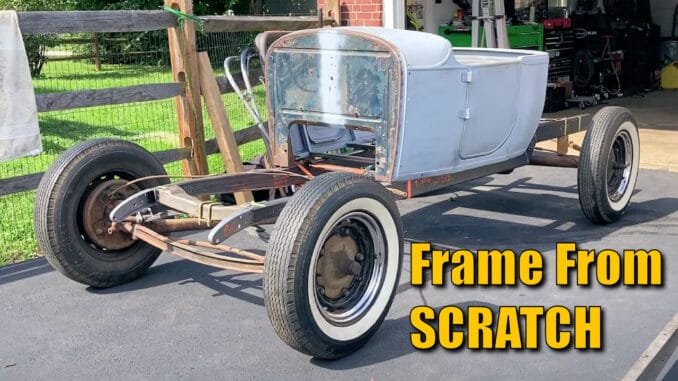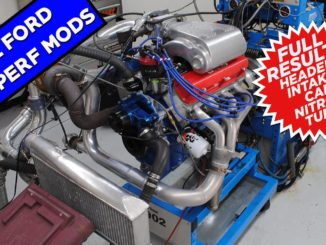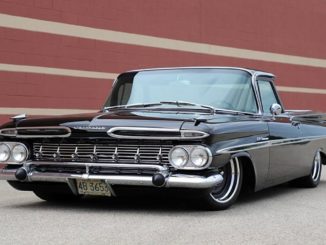
After some contemplation, The Hot Rod Workshop dives into building a hot rod frame from scratch for his Roadster pickup project. He intended to use the original Model A frame, which had seen better days, displaying signs of significant wear and pitting. The initial plan was to reinforce it with boxing plates, but a 24-foot length of 2×4 box tubing presented itself as a cost-effective and superior alternative.
Building a Sturdier Foundation for the Roadster Pickup
He embarked on an extensive project to revamp the chassis, and although it was a lot of work, it has proven to be a wise decision. The new 2×4 tubing provides a much sturdier platform to work with. Here’s a quick recap of the steps he took:
- Cutting the Tubing: He began by cutting the 24-foot length of 2×4 tubing into more manageable 10-foot sections.
- Shaping the Frame: To match the 2×4 rectangular tubing to the Model A-style frame horns, he added a taper.
- Creating the Kick-Up: After determining that a four-inch kick-up would suffice for the frame, he cut two 22.5-degree angles on each rail. Precise calculations ensured the right length for each piece to achieve the desired four-inch climb.
- Tacking the Frame: He employed a clever technique when it was time to tack these pieces together. He placed the passenger-side piece on the driver’s side and vice versa to keep the foundry seam on the rectangular tubing in the same spot inside the frame.
- Ensuring Alignment: Using the old Model A frame as a template, he checked for squareness and proper alignment front to back.
- Cross Member Installation: After stacking the new frame on top of the old one, he installed the 32-style cross member, paying attention to the caster angle.
- Sweeping Upward: The next step involved making relief cuts to give the frame a slight upward sweep, effectively lowering the car.
- Final Bracing: Once all was in place, we added heavy bracing to secure the frame.
- Rear Cross Member: With the new frame securely in place, he removed the old frame and installed the front axle. This also allowed him to install the rear cross member.
- Spring Reinstallation: He couldn’t forget the ’37 spring, as the shackles were in rough shape. Using a spring spreader, he carefully reinstalled the spring to level the frame with the weight of the Flathead engine up front.
- Rear Axle Placement: He brought the rear axle underneath, squared up the pinion angle, and tacked in the cross member.
The Result:
It was undoubtedly a labor-intensive process, but the outcome justified the effort. The revamped chassis provides a stronger foundation, and he believes it’s a more worthwhile investment than attempting to salvage the original frame with boxing plates.
Looking Ahead:
The next steps include finishing the frame and installing motor mounts to properly load down the front end. He’s also considering the addition of a drop axle up front. With the Flathead engine nearly ready for installation and a recently acquired 1948 truck transmission, he’s excited about the future of this project.
In Conclusion:
This extensive transformation of the chassis has been a monumental task, but we firmly believe it was worth every bit of effort. The vehicle’s stance is already impressive, and we anticipate it will only get better as we implement our future ideas. Overall, we’re now in a much better place with a robust and dependable foundation for our Roadster pickup. Stay tuned for more updates as we continue to turn this dream into reality.




